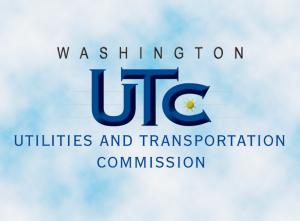Washington Releases Report on Effects on Resource Planning

In Washington, the Utilities and Transportation Commission issued a formal policy statement addressing how the state’s investor-owned electric utilities should incorporate energy storage technologies in their future resource acquisition plans. The statement lays out a framework for the commission’s ongoing rulemaking for integrated resource plans (IRPs), which are filed with the commission every two years for the purpose of identifying energy supply and demand projections for the following 20 years.
The commission noted that it had not included in the policy statement a requirement for any specific storage integration methodology. Rather, it said, the statement was intended as an outline for expected IRP practices going forward. The commission remarked that it anticipates that utilities will demonstrate reasonable consideration of energy storage options in their IRPs, inclusive of cost/benefit analyses. Elaborating on that point, the commission encouraged the companies to use the most detailed planning models available. As an example of updated energy storage modeling tools, the commission cited to those provided by U.S. Department of Energy laboratories.
According to the commission, the policy statement is the product of more than two years of investigation by its staff and stakeholders. The commission observed that the process began in 2015, when commission staff issued a white paper that detailed the obstacles that energy storage faces in traditional utility planning procedures.
The white paper had listed two specific challenges utilities face in trying to add energy storage to their IRPs:
- the lack of an organized market to set price signals for energy storage services, and
- the lack of a transparent means by which a utility might monetize those services.
Commission staff had summed up the key impediment as being “the current modeling practices of the utilities, which to date have not identified or quantified the benefits associated with energy storage.” The white paper went on to say that because definitive cost/benefit studies of energy storage have not been performed, existing IRP models are precluded from selecting energy storage as a component. Commission staff expounded that without a record of offsetting benefits, energy storage remains too cost-prohibitive, as IRPs are required to reflect a least-cost portfolio of resources.
To ensure the accuracy of cost data used in modeling assumptions, the commission stated that utilities must rely on current costs provided by reliable, independent third parties. It emphasized as well that energy storage resources should be competitively procured. And, the commission added, while its new policy statement focused primarily on utility-scale storage projects, opportunities for behind-the-meter energy storage facilities should not be discounted.
The commission further said that the utilities should consider rate design proposals for all customer classes that accurately reflect the cost of serving customers during high-demand periods. It explained that such designs may create more accurate price signals for customers and may, over time, support cost-effective, behind-the-meter storage investments. Finally, the commission suggested that each utility should monitor industry developments, including electric vehicle penetration in its service area, and then develop programs as appropriate to leverage electric vehicles as distributed storage resources. The commission gave assurances that its regulation of energy storage investments will follow the same principles applied to all other utility investments. Re Energy Storage Technologies, Dockets UE-151069, U-161024, Oct. 11, 2017 (Wash.U.T.C.).



